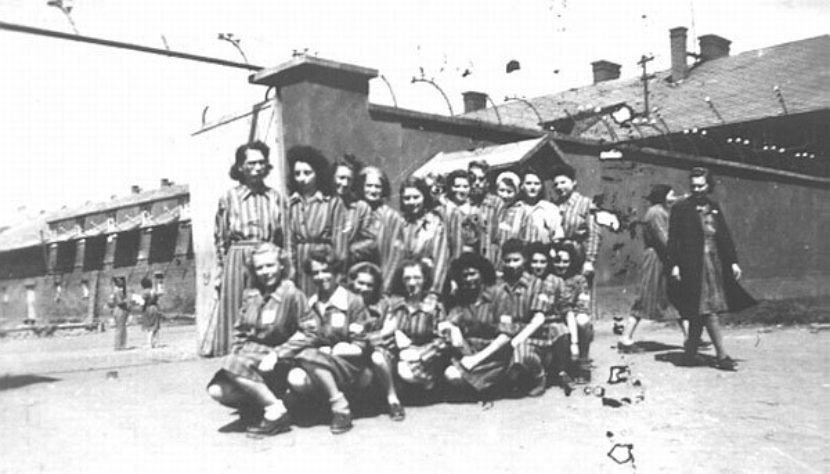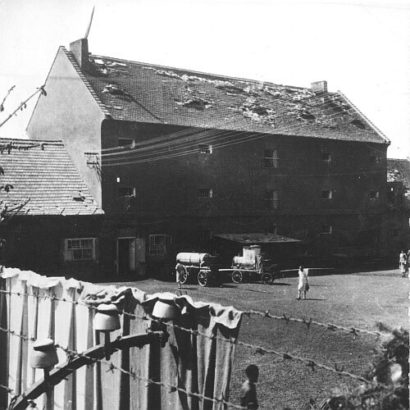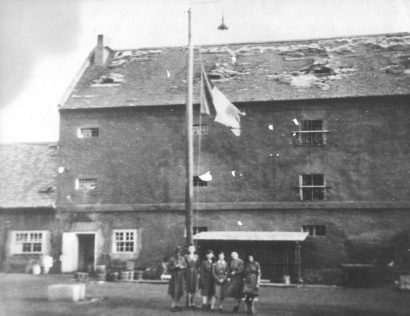Holleischen (Holýšov) Subcamp
Women's camp: April 15, 1944 – May 3, 1945. Men's camp: August 11, 1944 – January 31, 1945
The women's camp came under the authority of the Flossenbürg concentration camp starting September 1, 1944. Holleischen was a training camp for the female guard personnel deployed in the Flossenbürg’s subcamps.
![]()
Former prisoners in front of the camp in Holleischen, 1945 (Photo: Flossenbürg Concentration Camp Memorial). Shortly after the liberation, the women were photographed in front of the manor estate where they were imprisoned.
![]()
Prisoner camp in Holleischen shortly after the liberation, 1945 (Photo: Flossenbürg Concentration Camp Memorial)
![]()
French women in front of the tricolor, 1945 (Photo: Flossenbürg Concentration Camp Memorial)
-
Prisoners
Almost 700 women (over half of them French, 1/4 each Polish and Russian). In March 1945, 400 Hungarian-Jewish women in two transports arrived from the subcamp Nuremberg (Siemens-Schuckertwerke)
-
On April 13, 1945, 1,091 women were registered in Holleischen. Starting August 1944, 200 men were forced to work in Holleischen, among those mostly Polish (about half of whom were Jewish), Russian and Czech.
-
Forced labor and quarters
The women were forced to work in the munitions factory of the Metallwerke Holleischen GmbH (factory II); shortly before the war ended, they were also forced to build fortifications (e.g. anti-tank trenches). The men were forced to build a target-practice range.
-
It is unknown where the men were quartered, while the women were quartered on an enclosed manor estate, hidden in the woods some two kilometers from the factory.
-
Guards
Detail leader Emil Fügner with 64 air force soldiers and between 27 and 48 female overseers.
-
Death toll
Eleven documented deaths
-
Disbanding of the camp / end of the war
The women’s camp was liberated by partisans on May 3, 1945. The men’s camp was presumably disbanded on January 31, 1945.
-
Commemoration
A commemorative plaque on the perimeter wall of the manor estate where the prisoners were quartered.


